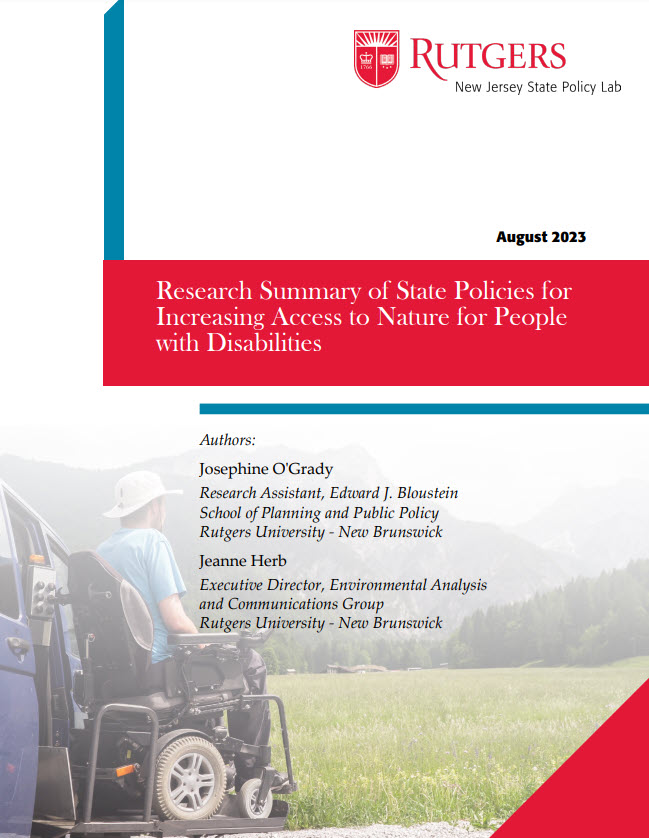First, we discuss federal policies that increase public recreation access to the outdoors, in order to understand how states have used this context to inform their own efforts to increase outdoor access. Using policy examples from twelve states (Alaska, California, Washington, Oregon, Utah, Colorado, Michigan, Minnesota, Virginia, Florida, Puerto Rico, and Massachusetts), the report points to five major insights on best practices for states to address this issue: balancing organized and passive access, preserving natural resources, directly engaging people with disabilities, addressing multiple social vulnerability factors, and maximizing the use of data. After that, we discuss implications for New Jersey, focusing specifically on the role of the following programs: Green Acres, New Jersey Outdoors, Local Recreational Improvement Grants, and the Outside, Together initiative. Lastly, we present our concluding thoughts and limitations on current policies, which we expect to inform future state initiatives on this topic.
